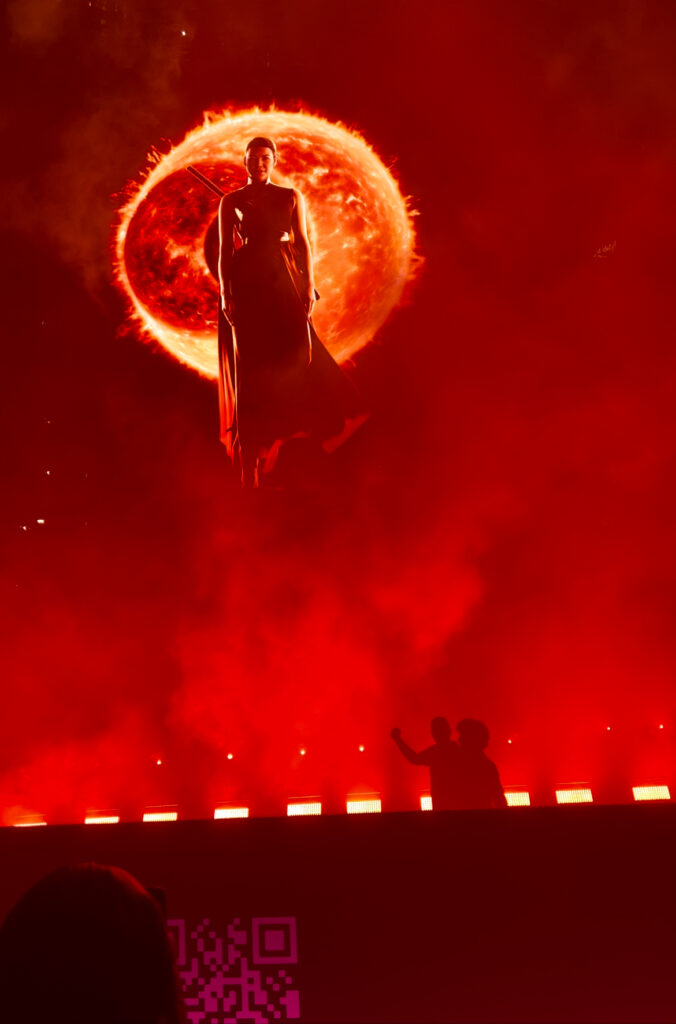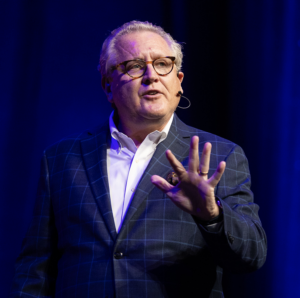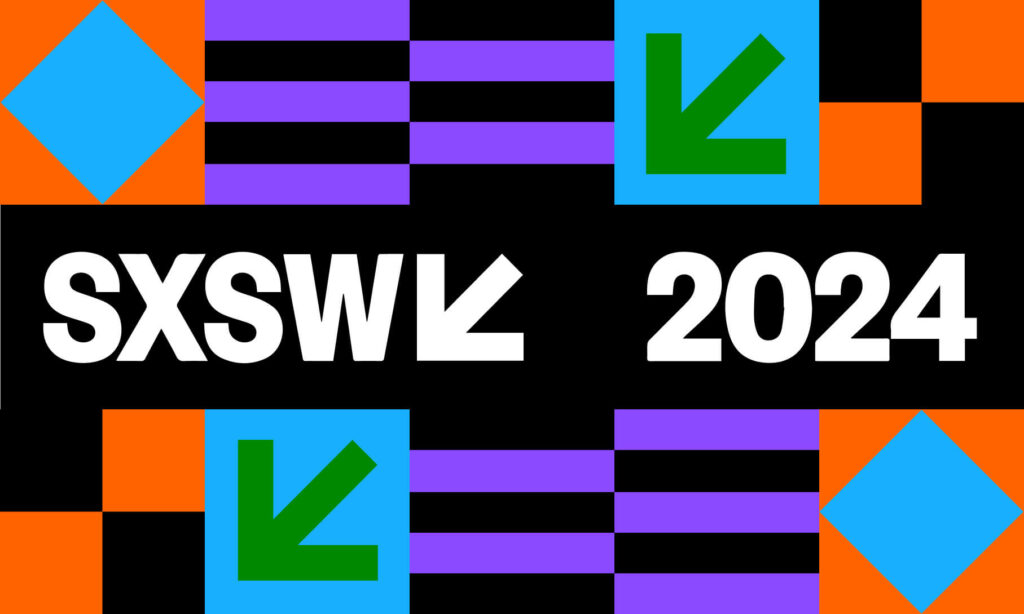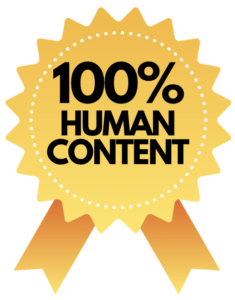SXSW 2024 was a gathering of thought leadership, providing a glimpse of “what’s next” in media, technology, and marketing, among other topics. I’ve been attending SXSW since 2010. It’s expensive, crowded, and — with 500 sessions a day — overwhelming — but I regard it as an essential part of my professional growth.
Each year has its own personality. My first conference in 2010 represented the dawn of social media — unbridled excitement! SXSW 2024 seemed more somber as attendees pondered deep fakes, the existential nature of AI, humanoid robotics, quantum computing, inclusivity, and mental health.
I took pages and pages of notes — this is a serious learning opportunity! But I wanted to pass along at least a few observations. I want to emphasize that my experience is a tiny sliver of the SXSW 2024 reality. I skipped out on the celebrities, the movie debuts, and the glitzy brand activation parties in favor of relevant topics, smaller discussions and intimate dinners.
I attended a workshop on how to be a futurist. The big a-ha for me was approaching various future scenarios through storytelling. Articulating a narrative about the future makes you think through the implications of trends. Very useful.
The first research on Gen Alpha was interesting. Gen Alpha is 0-10 years old so this came through interviews with their Millennial parents. They are projected to be:
- Fiscally conservative, an outfall of parents who are in debt
- Highly aware of brands and brand preferences
- Already influential in family purchase decisions
- The first headset generation. They prefer VR to tablets
- Non-readers of book
- 40% spend at least three hours a day online, and 24% spend at least 7 hours a day on a smartphone (if they have one).
Researchers emphasize the critical value of intuition in the AI Era: “The greatest source of wisdom is in our bodies.”
An interesting idea: Imagine your brand as a character. What would it look like? What would it say? What is its aesthetic?
There has been progress with technology to detect deep fakes but the social media platforms have rejected it because hate and controversy are good for their ad sales. Experts point out that elections are already being disrupted around the world by deep fake content and the US election is going to be a misinformation shit show. Biggest threat in 2024 is voice fakes, in 2025, realistic video avatars. Sora was mentioned as a game-changer.
There are 100,000 applications that make deep fakes. Nobody stands a chance to discern deep fakes without technological support. We need AI to beat AI.
During a keynote discussion about OpenAI, protesters yelled outside, pleading to protect the jobs of graphic designers. Poignant moment and an uphill battle.
Interesting research on what creates customer immersion (beyond engagement):
- Awareness – Overcoming distractions and getting their attention. Include them on their terms.
- Willingness – They decide to participate. Is it worthwhile? Do we have the time? Are there others we know who are involved? Is it safe? Safety is crucial.
- Connection – Does it meet expectations? What is it offering? Can I contribute? If you don’t make this connection quickly and clearly, you lose people. “I was drawn in, it seemed relevant.” Once they are engaged, is the safety validated? Learning about the norms of the group.
- Investment – Risking their social capital, giving their attention, an ongoing investment. People want to see an immediate return. Is the community responsive to my needs?
- Sharing – Earned by a gratifying experience. We want other people to share this experience. Community networks are the key to engagement loops (self-sustaining engagement, collective immersion)

SXSW 2024 was filled with thrilling brand activations like this 3D spatial computer promotion for a Netflix series.
I was encouraged to see a lot of content focused on the importance of word-of-mouth marketing as a “lived brand experience.” I wrote extensively about this in Marketing Rebellion as a key part of the future of marketing. I really think we are moving into a new era of brand marketing!
58% of Gen Z think the more absurd, the cooler it is. 82% say being weird is in. Perhaps discomfort is the future of marketing – breaking taboos.
Commercial humanoid robots are a year away and will be under $50,000. Good at moving things and lifting, nimble physical dexterity. Integration with AI allows more human-like decision-making.
TikTok has established an expectation that brands are defined by co-creation (re-mixing memes) and community instead of “broadcasting.” Co-creation is the language of the platform. You no longer have full control of your brand. Brands have to learn the language of creation. People expect brands to be part of the humor and that might poke fun at a brand.
There has been a lot written about the amount of time people spend scrolling on TikTok but what is not being captured the enormous time spent on creating for TikTok. It really stunned me to realize how many people are devoting their lives to ephemeral content in the hope of their 15 minutes of fame.
Another realization … almost every TikTok viral brand “success story” is a fluke. It wasn’t planned, it wasn’t strategized, it had nothing to do with an intentional creative effort. The famous cranberry juice case study is an example. TikTok’s recommendation for success: Lower your brand standards. Hmmmmm … that is not going to be a popular suggestion.
Growth in the gaming industry is stagnant, and the business is experiencing an upheaval due to consolidations and new platforms. Instead of new titles, growth is expected to come through interactivity and community.
With a history of employee abuse, the game industry is expected to be unionized.

SXSW 2024 was filled with a lot of movie star glitz, but I skipped that part (and the lines!) to focus on educational sessions that will energize me for the rest of the year!
Major marketing industry disruptors disclosed in various sessions:
- Hyper-fragmentation of culture and media. How do we reach them? 250 million creators = 250 million new media channels
- Rapid growth of Discord and other private communities
Ad-free social media platforms - No watercooler moments – no shared experiences due to isolation
- Spatial computing
- Immersive and metaverse — headset costs will drop, experiencing products will be transformed
- Data privacy — 2.6 billion data records breached in the last year
- Crackdown on collecting biometric data
- Data wallets. Consumers control the narrative
- Sustainability — Advertising eats up a lot of energy. Times Square could power 160,000 homes
- Neuroscience — EEGs, Eye tracking, wearables, neural links. Meta is working on a tech that can read your mind
- Real-time advertising reactions enabled by AI
- There is a backlash against purpose-driven marketing because too many brands make promises they don’t keep.
Japanese technology used human brainwaves to communicate with a 3d printer and print a functional guitar. The command line is “your thoughts.”
We are in a technology supercycle that will create sustained changes in the economy. The last example was the Internet. Three technologies are driving this cycle: AI, biotech, and interconnected devices.
What if somebody creates an “AI event” with thousands of fake accounts and a variety of real content and reactions? It would take us a long time to figure out it was fake, and by that time, it could trigger a real-life reaction. The end state of AI is not cartoon images; it is a war, stated futurist Amy Webb. You can watch her talk here:
AI is running out of data, so companies are inventing new devices to get more data into their systems. We are about to be surrounded by millions of sensors to not only know what to say next but also what to do next. VR, like Apple Vision Pro, is a face computer that will collect details about your life. It will read your intentions by reading your pupils, which react before your body does. It will know what you will do before you do it. There will be a battle for face supremacy.
If somebody steals your biometric or movement identity, there is no way to get it back or reset it.
The market does not reward safety. It rewards supremacy.
An organoid is a computer grown from human brain cells. This is already happening. Brain-based computing (organoid intelligence) disconnects our need for rare materials and massive energy consumption.
AI will create massive disruption in jobs and the economy. Governments need to create a Department of Transition (create a soft landing for businesses, move people to trades)
Compared to other years, social media, content marketing, and Web3 were down; podcasts, metaverse, influencers, privacy, experiential marketing, community, and storytelling were up. And of course, AI was featured in a thousand sessions!
Well, those are a few takeaways from SXSW 2024. Hope you found something useful here and maybe I’ll see you at SXSW next year?

Follow Mark on Twitter, LinkedIn, YouTube, and Instagram




